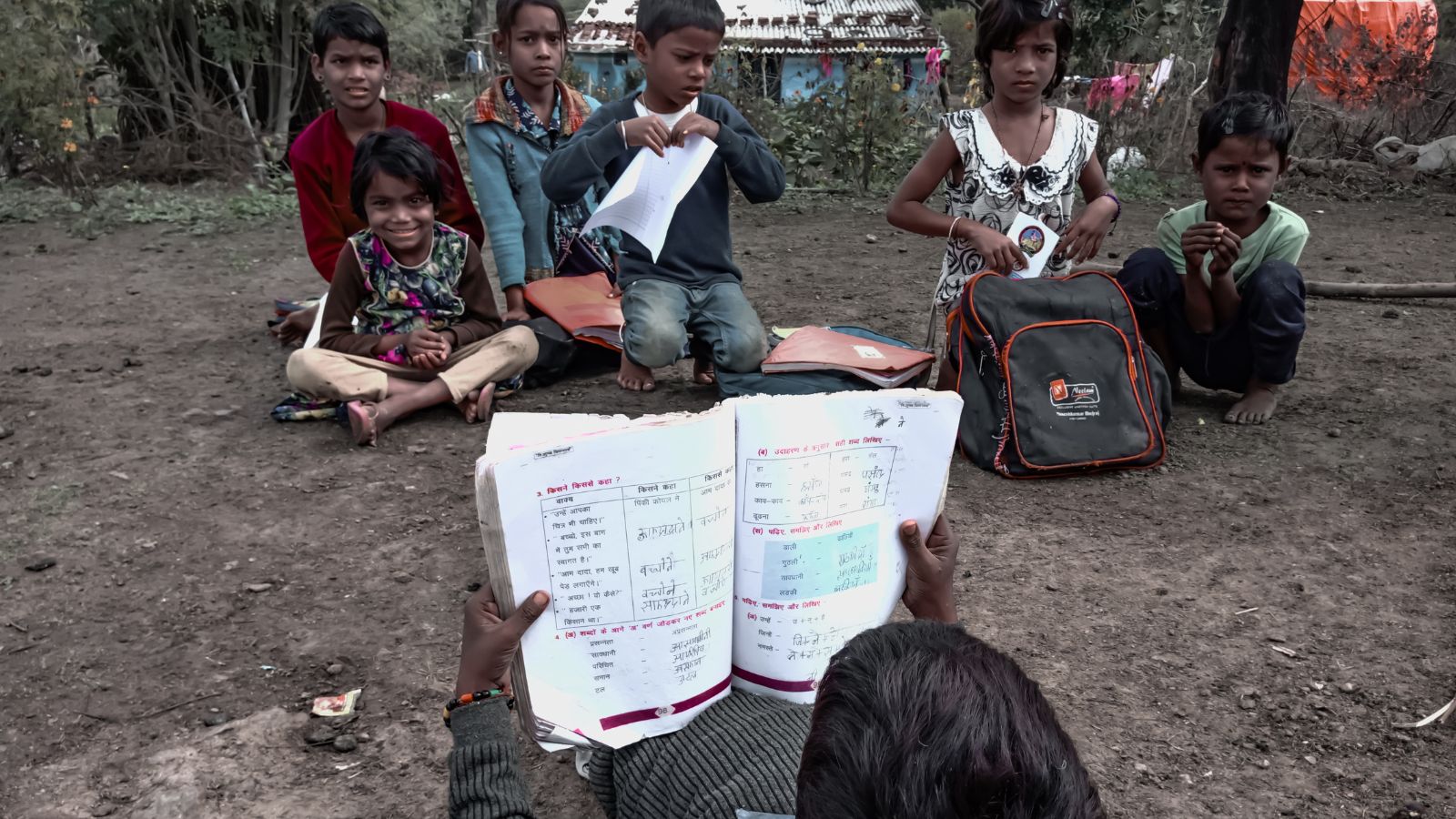Rural communities in Canada stretch across coastal villages, quiet forests, and wide prairie towns—each with its charm and deep connection to the land. Often seen as the heart of the country, these areas are home to strong, close-knit people. But behind the peaceful scenery, many rural Canadians face growing challenges that often go unnoticed.
From poor roads to limited hospitals, the struggles in these areas are real and affect millions. Yet, they’re rarely a top priority for decision-makers in cities. In this article, we explore the often-ignored hardships people in rural Canada face daily.
Lack of Accessible Healthcare Services

There are severe limitations for rural Canadians regarding access to medical care. Hospitals are usually hours away, and family doctors may not be available or in short supply. This can delay emergency care due to long distances or other travel issues.
In smaller towns, specialists visit only occasionally, requiring residents to travel for consultations or diagnostic tests. This system has created dangerous delays in treatment and preventive care. Seniors and people with chronic conditions are affected the most. Across rural Canada, healthcare deserts are growing, resulting in worsening outcomes and increasing dependency on already-stretched urban services.
Inadequate Mental Health Resources

Mental health care in rural Canada is still a largely unmet need. There is a stigma around mental illness, and it’s particularly intense in small communities. This, combined with limited access to psychologists, therapists, and crisis centers, is a recipe for disaster.
Many rural residents suffer in silence due to the lack of anonymity and support. Youth, farmers, and Indigenous populations face increased risks of depression and suicide. Targeted funding and culturally sensitive programming are some initiatives to be taken so that these issues do not remain in the shadows.
Poor Internet Connectivity

High-speed internet is considered a basic need in modern society. However, rural Canadians have to contend with outdated or non-existent infrastructure. Streaming, online education, remote work, and telehealth are difficult or impossible to access. Many communities still use dial-up or spotty satellite connections. This digital divide has widened dramatically since the COVID-19 pandemic and continues to deter rural students and professionals. The government has made promises, but the progress observed has been slow and has left rural Canadians digitally isolated.
Rising Cost of Living

Contrary to popular belief, the rural Canadian lifestyle is not always more affordable than in the cities. Due to transportation costs and limited local options, food, fuel, and utility costs are much higher. Even basic groceries are sometimes more expensive or unavailable altogether.
The heating bills rise in winter because of inefficient housing and harsh climates. Public transportation is practically non-existent, making car ownership essential, which can be costly. Unfortunately, these financial strains are left unnoticed in national policy discussions.
Youth Outmigration

Another pressing concern in rural communities is the steady loss of young people. Many youths leave their hometowns for urban areas to pursue better education, employment, and lifestyle options. Local economies are hollowed out as a result of this migration, and it leaves aging populations behind.
It is also a cause of long-term sustainability issues, as once young people leave, they rarely return, leading to demographic shifts that affect everything from voting patterns to hospital staffing. This exodus will only accelerate unless there are renewed investments in local opportunities.
Aging Infrastructure

Many rural parts of Canada depend on old and worn-out infrastructure that badly needs repair. Cracked roads filled with potholes, aging bridges that aren’t safe, and public buildings falling apart are common problems. In some places, water and sewage systems are so outdated that people still live under long-term water advisories.
During winter, entire communities can be cut off for days because snow-covered roads aren’t cleared in time. While cities get most of the government’s infrastructure funding, rural areas are often left behind, forcing residents to live with safety hazards and failing public services.
Decline of Local Media

Local newspapers and radio stations have long been the backbone of rural communities. They kept people informed, highlighted local issues, and held local leaders accountable. However, many of these outlets have shut down over time due to financial struggles and media company mergers.
Many small towns have no dedicated news source and must rely on social media or distant city-based outlets for information. This disconnect can lower civic involvement and leave residents unaware of the issues affecting them. The loss of rural journalism weakens both community bonds and local democracy.
Limited Public Transportation

In many rural areas of Canada, public transit is almost nonexistent. Without access to a personal vehicle, people—especially seniors, young people, and those with disabilities—are often left stranded. Intercity bus routes have been cut back, and train services are few and far between.
This lack of transportation isolates residents and causes them to miss out on job opportunities, medical appointments, and community activities. It deepens poverty and lowers the quality of life. While cities expand their transit systems, rural mobility remains overlooked, even as the need grows with aging populations and rising costs.
Struggles with Food Security
 Food insecurity in rural areas, particularly agricultural regions, is persistent and paradoxical. Expensive convenience stores are replacing grocery stores with limited selections. Long transport routes have made fresh produce and protein more expensive, and supply chain disruptions quickly empty shelves.
Food insecurity in rural areas, particularly agricultural regions, is persistent and paradoxical. Expensive convenience stores are replacing grocery stores with limited selections. Long transport routes have made fresh produce and protein more expensive, and supply chain disruptions quickly empty shelves.
Some rural families resort to home gardens or hunting out of necessity. Community food banks, when they exist, are stretched thin. Canada’s rural breadbaskets do not deserve to suffer from hunger, but that’s the hidden reality now faced by many.
Fewer Job Opportunities

In rural Canada, there are limited options for employment, and the available ones are usually agriculture, seasonal work, resource extraction, and low-wage retail. With the automation or decline of industries, many workers are left without viable alternatives. There is no access to universities or trade schools nearby, which disadvantages the youth.
Entrepreneurs have to face barriers such as poor connectivity and limited customer bases. A job loss can be devastating, given the few employers present. There are rarely new options in rural areas, unlike in cities, thus making employment a fragile and uncertain pillar of rural life.
Climate Change and Environmental Shifts

Due to erratic weather patterns, droughts, floods, and changing growing seasons, rural communities are on the front lines of climate change. Farmers must deal with low crop yields or delayed harvests, while fishing communities report changing marine life patterns. In western Canada, wildfires have become more frequent, devastating, and homes, livestock, and entire towns are under constant threat.
Most municipalities are unable to respond effectively in times of crisis. Insurance costs are rising, leaving many unprotected. The climate change policies are shaped in cities, so rural Canadians have to bear the immediate consequences.
Limited Access to Higher Education

Rural students face many barriers to post-secondary education. The existence of nearby universities and colleges is doubtful and requires long-distance travel or relocation. Unreliable internet also hampers online options, and local course offerings are limited in scope and quality.
So, once they leave for school, many don’t return, further draining rural talent. This lack of access leads to long-term income disparities. Rural youth need structural support. Otherwise, they will continue to be excluded from opportunities that could transform their lives and communities.
Disproportionate Policing and Legal Barriers
P

olice presence in rural areas is either excessively forceful or disturbingly absent. In some remote communities, response times are dangerously long due to understaffing or location. Over-policing can also contribute to fear and mistrust, especially among marginalized groups.
People do not feel protected as legal services are often far away and expensive, limiting access to justice. The lack of local legal support exacerbates crimes. Rural residents are unaware of their rights and do not know how to enforce them. This inequality leaves many vulnerable and at a systemic disadvantage.
Lack of Childcare Options

Affordable childcare is hard to find in rural Canada, forcing many parents, especially mothers, to leave the workforce. Licensed daycare centers are rare in smaller towns, and informal care options are often overwhelmed. Waitlists can stretch for years, and available subsidies don’t reflect the real struggles of rural families.
For those working non-traditional hours, like farmers or shift workers, standard daycare schedules simply don’t work. This puts huge pressure on caregivers, even as rural areas face ongoing labor shortages. Young families are left with impossible choices without better childcare support, hurting their future and the community’s.
Closure of Rural Schools

Many rural schools across Canada have been closed due to declining enrollment. These institutions provide education and serve as the heart of a community. Students are forced to travel long distances daily because of school closures, sometimes by bus for over an hour.
The disturbance can be profound, especially for younger children or those with special needs. Communities lose a vital anchor, and parents lose confidence in the future of their hometowns. It should be a national priority to rebuild local education, yet it is seemingly a low priority on political agendas.
Poor Housing Conditions

Quality housing with affordable prices is a growing concern in rural Canada. Many older homes have inadequate insulation, outdated heating systems, safety issues, and are generally in poor condition. Some towns do not have rental markets, limiting mobility for workers, families, and seniors.
There is rarely any new construction due to limited investment and low demand. Rural housing is underfunded and invisible, while the government tends to focus on funding urban homelessness. The dream of a simple life in the countryside is not so simple anymore.
Limited Access to Pharmacies

In urban centers, pharmacies are usually within walking distance, unlike in rural Canada, where people must travel long distances just to fill a prescription. Pharmacies in smaller towns may have limited inventory, limited hours, or be completely absent. In emergencies, any delay in accessing medication can result in hospitalization or worse.
There are alternatives such as mail-order pharmacies, but slow delivery times and inconsistent postal service make them unreliable. The added logistical burden and high prescription costs make health management even more difficult for rural residents.
Cultural and Recreational Isolation

There is limited access to arts, entertainment, and organized sports in rural regions. Local theatres, museums, and festivals are a rarity; when they do happen, they depend heavily on volunteer support and consistent funding. Young people growing up in rural towns often feel culturally disconnected, as they do not have the same opportunities to explore music and art as someone living in an urban area. Rural communities are at risk of becoming stagnant if there is no cultural engagement and the outlets for creativity and personal growth are few.
Banking and Financial Services Disappearances

Many banks have decided to close rural branches in favour of digital services. This forces residents to drive to other towns to deposit a cheque or seek financial advice. Older residents who are uncomfortable with online banking face serious risks.
Farmers find it harder to obtain loans tailored to agricultural needs, while small business owners struggle with delayed access to capital. These factors also diminish the economic ecosystem, as fewer financial services mean fewer new businesses. Financial exclusion is the silent underside of rural economic decline.
Burden on Volunteerism

Rural communities rely heavily on volunteers to keep the most essential operations going; this reliance comes from the absence of strong public services. Ranging from fire departments and libraries to food banks and community events, all depend on volunteers. However, an aging population means fewer people can perform these jobs.
The same individuals are often involved in multiple roles, leading to burnout and fatigue. These volunteers make rural life easier; without them, it becomes harder, and there is more isolation. Yet governments are inconsiderate when factoring this unpaid labor into service planning or resource allocation.
Unreliable Postal Services

Urban Canadians are expected to receive daily mail with relative consistency. Still, the same is not the case for rural communities, where they face reduced postal services and limited hours of operation. Some residents barely get mail a couple of times a week, and post office closures have forced many to travel long distances for basic mail access. Package delivery is even more unpredictable, affecting those who rely on prescriptions or remote shopping. This service was a lifeline for rural Canadians and has become yet another neglected aspect of life beyond the cities.
Insufficient Emergency Services

In many rural areas, emergency services are stretched thin. Ambulance response times can be dangerously slow due to vast distances, staff shortages, and poor infrastructure. Most fire departments rely on volunteers with limited training and outdated equipment. In remote regions, search and rescue operations are hard to carry out and sometimes end in tragedy.
Despite these challenges, urban centers receive more funding and training support, even though rural responders must cover much larger areas. As a result, during critical emergencies, rural Canadians are often forced to depend on neighbors instead of trained professionals.
Disconnection from Political Representation

Political leaders are focused on urban issues and use their platforms for urban development, leaving rural Canadians with feelings of being left behind and ignored. Constituencies in rural areas are geographically vast, so meaningful outreach and regular town halls are basically impossible.
As a result, residents feel their voices are not heard in national and provincial debates. This growing political alienation fosters distrust in government and lower voter turnout. Since there is no fair representation for rural communities, priorities such as agriculture and small-town healthcare remain low on the national agenda.
Barriers for Newcomers and Immigrants

Immigration is seen as a solution to rural labor shortages; however, this does not change the fact that newcomers face challenges integrating into small communities. They need services such as language training, cultural support, and employment counseling, which are hardly seen in rural areas.
So, many immigrants leave for the cities, making rural resettlement programs unsustainable. Attracting immigrants without a plan for integration only leads to disappointment. If the needs of the newcomers are addressed through policies, only then can rural diversity become a strength and not a liability.
Inconsistent Cell Phone Coverage

In rural and remote parts of Canada, basic mobile service is often unreliable. Large dead zones still exist along highways and in other small towns; these zones make it difficult to contact emergency services or conduct business on the go. School work, remote work, and social connections are also affected by bad coverage. There is little financial incentive for carriers to invest in less populated areas, and there is little government intervention. Residents will remain at a digital disadvantage until rural connectivity is prioritized and improved.
Shrinking Local Economies

Many rural towns in Canada are struggling as major employers, like mills, mines, and factories, either shut down or shift to automation. This leaves workers without jobs and communities without vital income. Small businesses also suffer because there aren’t enough customers, and young people keep moving away to find better opportunities elsewhere.
As the local tax base shrinks, it becomes harder for towns to maintain roads, public buildings, and essential services. Without new investments and creative economic solutions, these areas risk falling into long-term decline. To keep rural communities alive, we need focused support and smart development strategies.
Legal and Regulatory Red Tape

Laws and rules in rural Canada make it almost impossible to run a farm, open a business, or manage land, as it is accompanied by dealing with layers of confusing regulations. Inconsistent and slow permitting processes are to blame, and small municipalities lack the staff to assist.
Farmers have to navigate duplicative and contradictory federal, provincial, and local laws just to be able to operate. Entrepreneurs face zoning and licensing delays that can stretch for months. Regulations need to be streamlined and rural-specific to support growth and sustainability without suffocating the residents in paperwork and delays.
Neglect of Indigenous Rural Issues

In many Indigenous communities, rural struggles are even more severe. These areas face unique challenges rooted in a long history of inequality and neglect. Issues like boil water advisories, poor housing, and limited access to healthcare are still common. Broken promises and underfunding have created deep mistrust in government systems.
Efforts to protect culture, manage land, and practice self-governance often lack the necessary support. Indigenous communities have strong ideas and solutions, but they need proper funding and respect from all levels of government. True reconciliation means investing in these communities and allowing them to lead the way forward.
Underdeveloped Tourism Infrastructure

There is incredible natural beauty, history, and cultural richness in rural Canada, but much of it remains unknown due to poor tourism development. Roads to scenic locations are unpaved, signage is lacking, and amenities like accommodations or eateries are scarce. Promotional events that could draw attention lack funding and marketing support.
While big cities promote culinary scenes and museums, small towns with unique experiences are left out of the national tourism narrative. Local economies could be diversified by investing in rural tourism, preserving heritage, and even creating jobs. Rural pride is fading, while many of these untapped opportunities await.
Rising Insurance Premiums and Lack of Coverage

Insurance in many rural communities, for home, farm, or business coverage, has skyrocketed, or the policies have been withdrawn entirely. Wildfires, floods, and weather events are seen as high-risk, making rural properties unattractive to insurers. Residents have to pay massive out-of-pocket costs to rebuild or repair damage.
Liability insurance for community events or small businesses has also become extremely expensive. The lack of affordable coverage limits economic activity and creates vulnerability in disaster situations. Governments have to come up with public insurance models or subsidies to ensure that rural resilience doesn’t depend on market risk assessments alone.
Conclusion

Life in rural Canada is much more complicated and difficult than the peaceful image often shown. From underfunded healthcare and limited access to education to crumbling infrastructure and growing environmental risks, rural communities face serious, long-standing challenges.
These problems aren’t just about location. They’re tied to where money is spent, how policies are made, and the growing divide between urban and rural life. Because many of these struggles are less visible, they’re easy to ignore—but their effects run deep.
If Canada truly wants to honor the role rural communities play in shaping the nation, it must listen more carefully, invest more confidently, and act with urgency. Only then can rural Canada survive—and thrive—in the years ahead.
22 Times Canadian Ingenuity Left the U.S. in the Dust

When people think of innovation, they often picture Silicon Valley. However, Canada has a history of innovation, too. Whether it’s redefining sports, revolutionizing medicine, or just showing America up at its own game, Canadian inventors, thinkers, and dreamers have had their fair share of mic-drop moments. Here are 22 times Canadian ingenuity left the U.S. in the dust.
22 Times Canadian Ingenuity Left the U.S. in the Dust
